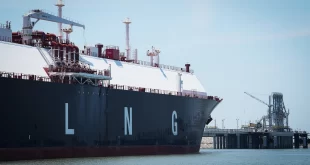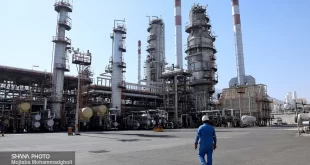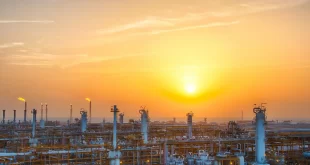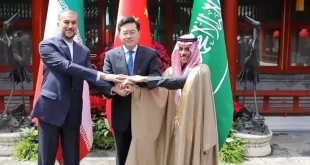India now has the highest oil and natural gas consumption in the world and will for the foreseeable future. With exorbitant and ever-increasing energy demands, India is under pressure to diversify its energy supply. Iran and Saudi Arabia are now in a race to meet India’s demand in the international oil and gas market.
India is the second largest Asian oil consumer after China. In 2017, India was buying 577,000 barrels per day (bpd) of oil from Iran, accounting for 27 percent of Iran’s total crude oil exports. From January to October 2018, India imported 789,000 bpd of oil from Iran, an increase of 36 percent. Iranian officials have offered significant price discounts to India as a strategy to maintain Iran’s share of India’s oil market, and Iran has insured tankers which transport its oil.
Saudi Arabia is one of India’s largest oil suppliers, and the second largest supplier of crude oil and liquefied petroleum gas (LPG).
Saudi Arabia is one of India’s largest oil suppliers, and the second largest supplier of crude oil and liquefied petroleum gas (LPG). In 2016-17, India’s crude oil imports from Saudi Arabia amounted to 18.5 percent of its total imports or 39.5 million tons out of a total of 214 million. From January to October 2018, India imported 697,000 bpd of oil from Saudi Arabia.
From Iran’s perspective, India’s investment in multiple sectors of its own domestic market, especially infrastructure and energy, equates to political insurance. India’s investment in Chabahar port is a case in point.
In February 2018, during a visit by Hassan Rouhani to New Delhi, India, Iran signed 15 mutual cooperation documents, the majority of which related to oil and gas fields cooperation. After this visit, it was announced that Iran had eliminated the cost of transporting oil to India for the rest of the fiscal year. The decision was made as a response to India reducing its oil imports from Iran between April 2017 and January 2018. The move marked a success for Iranian policy makers, and it was subsequently stated that India would increase its oil imports from Iran.
Saudi Investment in India’s Energy Sector
Saudi Arabia plays an active role in energy diplomacy in India. Investment in energy infrastructure is an effective way for Saudi Arabia to infiltrate and influence India’s foreign policy decision-making process. Aramco, the world’s largest oil producer, is looking to invest in foreign refineries to meet demand for oil and increase its share of global markets. This is a strategy that will allow Saudi Arabia to expand its share of Asian markets and essentially leave its rivals in the dust. Saudi Arabia is not only competing with Iran politically but aiming to gain an edge over even-more-productive Iraq to become India’s largest oil importer. Last year, Iraq was India’s largest oil importer.
In April 2018, Saudi Aramco and India’s Ratnagiri Refinery & Petrochemicals—a joint venture of Indian Oil Corp (IOC.NS), Hindustan Petroleum Corp (HPCL.NS) and Bharat Petroleum Corp (BPCL.NS)—signed a contract worth $44 billion to build a refinery in the state of Maharashtra in western India. The two sides are contributing 50 percent to this project. Saudi Aramco has said the refinery will have a production capacity of 1,200,000 bpd upon completion. Aramco also said the project would be one of the largest refineries of petrochemicals in the world. According to Saudi Energy Minister, Khalid Al-Falih, refining capacity of 60 million tons of crude oil is said to be Saudi Arabia’s only major investment in India. Aramco is also interested in investing in fuel and petrochemical sales as well as oil reserves in India.
Saudi Arabia does have the potential to act on this investment promise. Aramco has shipped three million barrels of crude from three refineries in India, and another Indian refinery is currently negotiating with Saudi officials to sign a contract for one million barrels of oil. Political tensions between Iran and Saudi Arabia, especially over the Yemen crisis, but also enflamed by the US’s withdrawal from the Joint Comprehensive Plan of Action, and new sanctions against the Iranian energy sector, have meant that Saudi Arabia is more than capable of seizing the current momentum in its favor to decrease Iran’s role in regional energy markets, especially that of India.
Saudi Investment in TAPI Project
Afghanistan, Turkmenistan, Pakistan, and India have recently signed multi-billion-dollar investments in the TAPI gas pipeline project.
Afghanistan, Turkmenistan, Pakistan, and India have recently signed multi-billion-dollar investments in the TAPI gas pipeline project. Saudi Arabia has announced it will invest in the construction of a gas pipeline that will transfer Turkmen gas to Pakistan and India through Afghanistan.
With the participation of Saudi Arabia in the TAPI energy transfer project, Riyadh, on the one hand, could draw the US’s support for reducing Russian domination of Central Asian energy resources (through increasing export routes around Russia). On the other hand, with this increase in engagement in the Central Asian energy region, it may be possible for Riyadh to gain concessions in future energy talks, especially in the context of global oil policy, to control the global price of energy carriers.
Security concerns and financial resources pose the main obstacles to realizing the TAPI project, yet Saudi Arabia’s support for the project is merely another instrument to circumvent Iranian power and influence. Saudi Arabia is directly investing in India’s energy infrastructure, as well as offering political and economic support for transportation projects which allow access to the Indian market by side-stepping Iran.
For India, the American market is thus more attractive. With the US-imposed sanctions in place, Saudi Arabia is likely to become India’s largest oil supplier. At the same time, however, India will greatly increase its imports from Iraq. Even Nigeria has gained access, so insatiable for fuel is India’s current phase of development. Most oil producing countries have increased their exports to India across the board.
As expected, the U.S. has granted waivers to major buyers of Iranian oil in India and allowed them to continue imports beyond the U.S. sanctions deadline. It will not be easy for India to find an alternative to Iranian oil, but it does not mean that in the mid-term or long-term it will be impossible for India to figure out some long-standing arrangement. Saudi Arabia and Iraq are poised to make up the bulk of India’s oil needs. Saudi Arabia is more interested in exporting oil to India in order to weakening Iran’s position in its oil market, with the added bonus of making a dent in the Iranian economy.
India and China are interested in establishing an “Oil Buyer’s Club,” to increase their bargaining power and reduce the power of the U.S. oil market by also importing crude from the U.S. China and India had previously proposed to buy Iranian oil in exchange for being paid in Yuan and Rupees.
Iran’s main issue (among many) is to be available to attract foreign investment when it does have the chance to bypass sanctions, and this requires an accommodating legal framework, an efficient and fast decision process, and political stability (especially in the international context). These variables are far from being achieved, and the country has a long road ahead.




